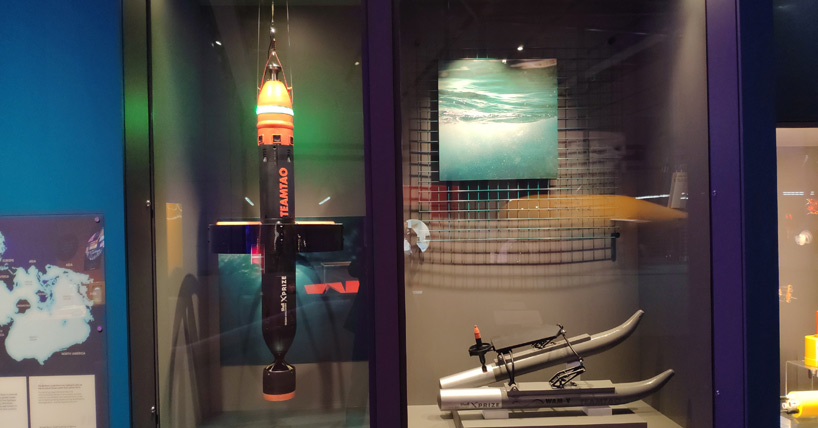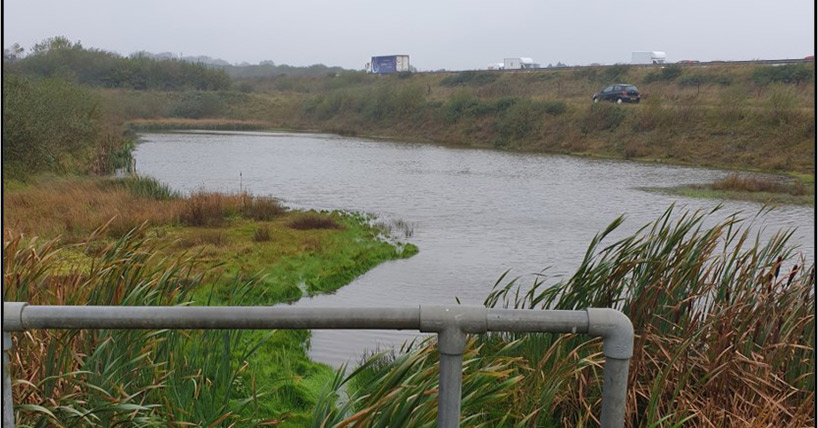Science Museum
Driverless: Who is in control?
Published on: 17 June 2019
A novel low-cost underwater robot invented by North East engineering experts is being showcased as part of a major new exhibition at the London Science Museum.
The show, which launched this week and runs until October 2020, takes a look at Artificial Intelligence and the race to create fully autonomous machines with the ability to make decisions on their own.
One of the highlights of the exhibition is the subsea drone developed by TeamTao; a collaboration between Newcastle University and Soil Machine Dynamics (SMD) to take part in the $7m Shell Ocean Discovery XPRIZE competition. The team’s 1:6 scale model system used for wave-tank testing is also on display.
Built using mainly cheap bespoke or adapted components and tested in the hyperbaric chamber at Newcastle University’s National Centre for Subsea and Offshore Engineering, the robot uses an autonomous swarm approach to chart the seafloor.

Inspiring the next generation
Dr Hua Khee Chan, part of TeamTao and a Research Associate based in the School of Engineering at Newcastle University, explains:
“We know more about the surface of our Moon than our very ocean.
“As the ocean produces more than 50% of the oxygen in our atmosphere, feeds 3.1 billion of earth’s population and helps regulate the climate in our biosphere, it is important to cultivate strong interests and instil curiosity to our younger generation to get involved in the ocean environment.
“We hope this exhibit will spark inquisitiveness among the younger audience and inspire some to take up an engineering or scientific career in the future.”
Moonshot Award
Under the name of TeamTao, the North East team were the only UK entrants to reach the grand final of the Shell Ocean Discovery XPRIZE last month, and were recognised by the judges for their highly innovative approach by being awarded the Moonshot Award worth $200,000.
The subsea drones - torpedo-like devices - are called BEMs, or Bathypelagic Excursion Modules. The name is a reference to the Lunar Excursion Module (LEM) that put the Apollo astronauts on the Moon.
Dale Wakeham, TeamTao’s lead adds:
“For the team and our technology to be recognised with the Moonshot award and now to have part of our system showcased in such a prestigious museum is a huge triumph and I hope it shows the public what such a driven, small team can achieve.
“I also would have never believed when I decided to call our drone the BEM that one would eventually be on display 25m from an actual Apollo LEM!”
The robot is programmed to traverse through the water column. It hovers approximately 100m above the seabed and a 360 degree sweep of seabed terrain is captured using its downward looking imaging sonar, which was specially developed by Newcastle University’s SEAlab led by Dr Jeff Neasham. It also carries an array of cameras to film everything around it and can be fitted with sensors to record seawater conditions.
Once the BEM's mapping cycle is complete, the robot returns to the surface where it is scooped up by an autonomous surface catamaran - the USV – for redeployment or to be brought back to shore.
“Instead of using an autonomous underwater vehicle that costs millions of pounds, is the size of a family car and weighs several tonnes. Our proposal to discover the ocean relies on a low-cost robotics system that works collaboratively,” explains Dr Chan.
“We hope this co-bot (collaborative robot) is the precursor for the future of ocean exploration.”
The competition is part of XPRIZE’s 10-year Ocean Initiative – a commitment made to launch five multi-million dollar prizes by 2020 to address critical ocean challenges and inspire innovation that helps create an ocean that is healthy, valued and understood.
TeamTao is a collaboration between SMD and Newcastle University and was supported through the Industrial Strategy Challenge Fund, delivered by UK Research and Innovation (UKRI), the national funding agency with a £6 billion budget to invest in science and research across the UK. It brings together seven Research Councils, Innovate UK and Research England.
Newcastle University is a world-leader in subsea engineering and acoustics research, bringing together experts from a wide range of engineering and scientific backgrounds.
More information about ‘Driverless: Who’s in control’ can be found here:
https://www.sciencemuseum.org.uk/see-and-do/driverless-who-is-in-control



